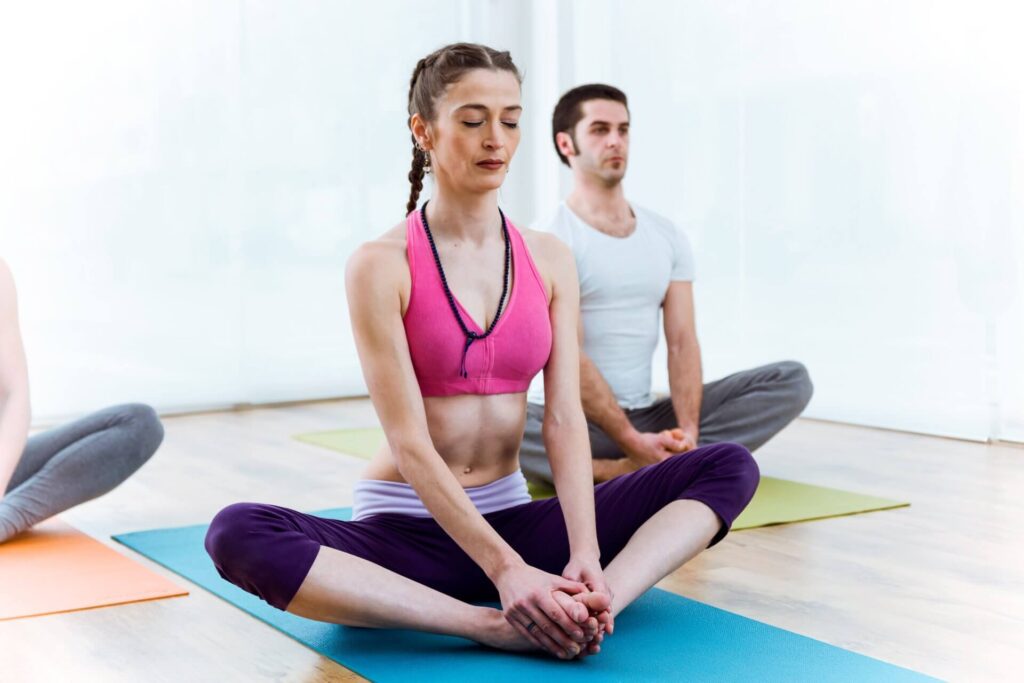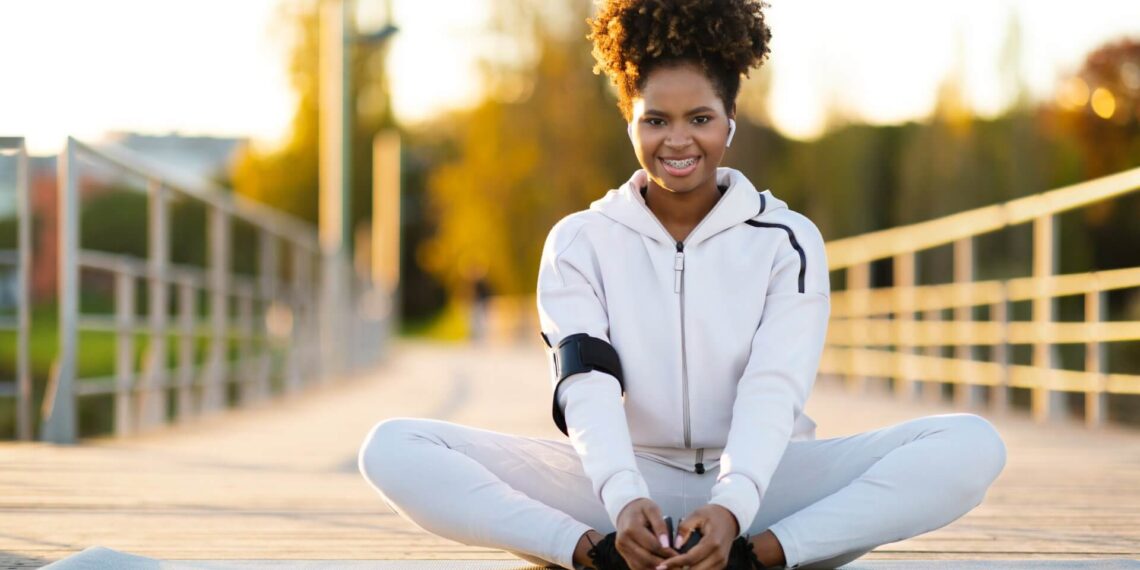“In Baddha Konasana, we bind ourselves to the present moment, bringing our inner and outer worlds into harmony.”
Bound Angle Pose – Baddha Konasana is a gentle yet powerful yoga posture that encourages openness and release in the hips. This beginner to intermediate-level asana involves bringing the soles of the feet together, creating a diamond shape with the legs. Baddha Konasana is celebrated for its ability to open the hips, soothe the mind, and improve flexibility.
Baddha Konasana Meaning
The name “Baddha Konasana” is derived from the Sanskrit words “Baddha,” meaning “bound,” “Kona,” meaning “angle,” and “Asana,” meaning “pose.” The pose symbolizes the bound angle formed by the legs, representing unity and harmony.
Benefits of Bound Angle Pose – Baddha Konasana
Bound Angle Pose (Baddha Konasana) offers a range of physical and mental benefits for beginners to intermediate practitioners:
- Hip Opening: It gently opens and releases tension in the hips and groin area.
- Improved Posture: Baddha Konasana promotes better posture and alignment by enhancing flexibility.
- Stress Reduction: The pose calms the mind, reduces stress, and alleviates anxiety.
- Prepares for Meditation: It is often used as a preparatory pose for seated meditation.
- Pelvic Floor Strengthening: Regular practice can strengthen the pelvic floor muscles.
Step-by-Step Instructions Bound Angle Pose – Baddha Konasana

- Starting Position: Sit on your yoga mat with your legs extended straight in front of you.
- Bend Your Knees: Bend your knees and bring your heels toward your pelvis.
- Sole-to-Sole Connection: Allow the soles of your feet to touch each other, creating a diamond shape with your legs.
- Hold Your Feet: Hold your feet with your hands. You can grasp your ankles, toes, or wherever you can comfortably reach.
- Lengthen the Spine: Sit up straight and lengthen your spine.
- Gentle Press: Gently press your knees toward the mat, feeling the stretch in your inner thighs and groin.
- Breathe: Take slow, deep breaths, allowing your breath to guide you deeper into the stretch.
- Hold and Breathe: Hold the pose for 20-30 seconds, breathing deeply and evenly.
- Release: Release your feet, extend your legs straight, and relax.
Bound Angle Variations and Modifications Baddha Konasana
If you have tight hips or find it challenging to press your knees toward the mat, you can use yoga props like cushions or blocks under your knees for support. For a deeper stretch, gently fold forward from your hips while keeping your back straight.
Tips for a Deeper Practice
Focus on keeping your spine long and your shoulders relaxed. Breathe deeply and mindfully, allowing your breath to guide the stretch.
Preparation Poses Bound Angle – Baddha Konasana
- Cobbler’s Pose (Upavistha Konasana): Practicing Cobbler’s Pose can help prepare the hips for Baddha Konasana.
- Wide-Legged Forward Bend (Prasarita Padottanasana): Stretching your inner thighs in Prasarita Padottanasana can prepare you for Bound Angle Pose.
Alternative Poses for Bound Angle – Baddha Konasana
- Seated Forward Bend (Paschimottanasana): After practicing Baddha Konasana, stretch your hamstrings and lower back in Paschimottanasana.
- Corpse Pose (Savasana): Finish your practice with Savasana to integrate the benefits of the pose and promote deep relaxation.
Final Thoughts
Bound Angle Pose (Baddha Konasana) is a gentle and transformative beginner to intermediate-level yoga asana that opens the hips, soothes the mind, and enhances flexibility. As you embrace the bound angle of your legs, you’ll discover a sense of unity and harmony within your practice. Incorporate Baddha Konasana into your yoga journey to experience its transformative effects on your physical and mental well-being. With each gentle press of your knees, let go of tension and stress, and savor the openness and flexibility that this asana offers.
Bound Angle Pose serves as a reminder of the serenity and balance that yoga brings into our lives, nurturing both body and spirit.


